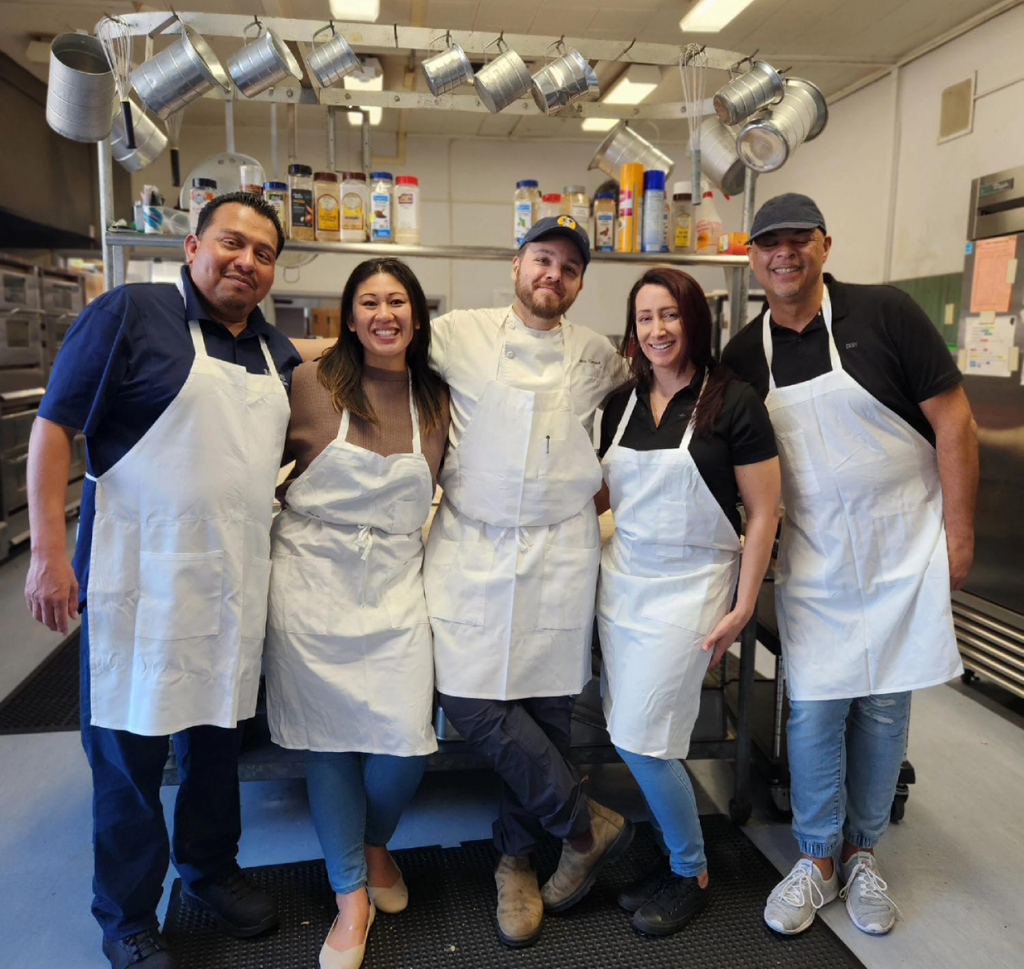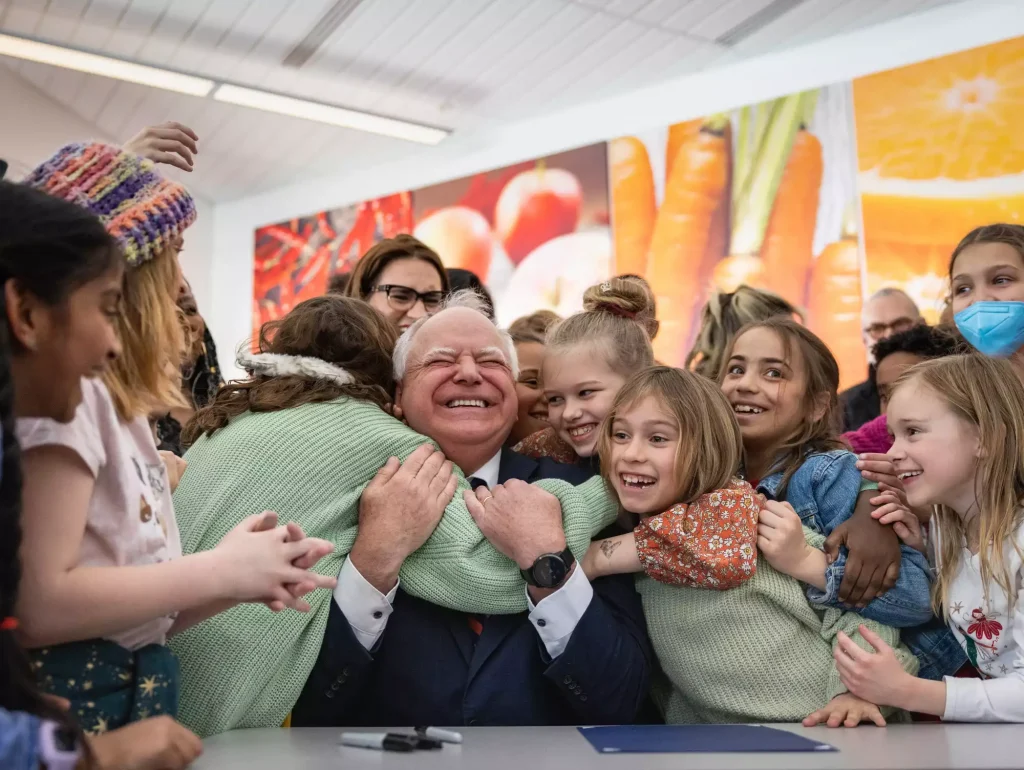
Let’s Talk… School Nutrition
California’s Visionary Leadership in School Nutrition and the Path Forward
September 18, 2024
As millions of California K-12 students settle back into classrooms this fall, their parents can rest assured knowing their kids now have access to two free school meals each day. Thanks to the visionary leadership of California’s elected leaders, we became the first state in the nation to fund and implement universal School Meals for All. Now, regardless of family income, children can access the food they need to thrive both academically and physically. As one of the original co-sponsors of this pioneering effort, NextGen is thrilled to see the many positive impacts of this program unfold.
California’s bold move to provide free, universal school meals goes beyond just fighting hunger. By making nutritious, locally sourced, and freshly prepared breakfasts and lunches available to all students, our state has raised the bar for a new standard for school nutrition nationwide. Across the country, this innovative policy is gaining traction and it is crucial that California keep up the momentum and leverage our investments to make an even greater impact.
Meeting Hungry Kids Where They Are
The sobering reality is that 1 in 4 households with children are grappling with food insecurity in California. These rates are comparable to those in 2020 during the early days of the COVID-19 pandemic. Furthermore, communities of color — Black and Latino households in particular — are bearing the brunt of this crisis. Unfortunately, we are seeing food banks and other community based organizations engaged in the fight against child hunger strain to meet this demand as rates of hunger and poverty continue to rise.
The School Meals for All program is designed to meet hungry kids where they are – it bridges a critical food insecurity gap by ensuring all children get access to two free school meals every day. The program also eliminates the stigma associated with accessing federal meal programs, which frequently caused some students to skip meals altogether. The California Budget & Policy Center found that 44 percent of families facing food insecurity in California would not even qualify for free or reduced-price school meals because of the high cost of living in California (the cutoff for a family of 4 was just $55,500). This past year, California served a record-breaking 872 million meals – more meals than ever before. California’s program is a resounding success: it has reduced child hunger and increased equity across the board.
Building on this success, California has made investments in several key programs that help realize the full potential of School Meals for All.
Setting a New Standard for School Nutrition
For many students, a school meal is not just a convenience but a main source of nutrition. Research has consistently shown that investing in healthy, freshly prepared meals can significantly boost student health, including their physical and emotional well-being as well as academic performance. At many schools across the state, there are projects funded by the California Department of Food and Agriculture (CDFA) Farm to School Incubator Grant Program. This grant program has been championed by California’s First Partner Jennifer Siebel Newsom and it helps schools overcome barriers to serving more freshly prepared meals, supports local farmers who use climate-smart practices, and fosters important connections between local farmers and schools. These innovative projects also help students understand more about the food they eat and where it comes from, which could be a local farm right around the corner.
A recent survey of California school nutrition directors found the rate of unfilled positions in the state’s school food programs is three times higher than unfilled positions for U.S. public school teachers. The Chef Ann Foundation, in partnership with NextGen, helped to establish the Healthy School Food Pathway (HSFP) program, which is designed to address decades of underinvestment in and focus on school food professionals – their training, wages, and career opportunities. This first-of-its-kind program provides unique educational and hands-on experiences in scratch-cook operations to support both new and existing school food professionals in procuring, preparing and serving more healthy and freshly prepared school meals. In addition, it helps to meet Governor Newsom’s ambitious goals for apprenticeships, especially in the public sector, and is recommended by the Farm to School Roadmap for Success.

Participants in the Healthy School Food Pathway Fellowship
The state’s $750 million investment in the Kitchen Infrastructure and Training Program is working to upgrade school kitchens to meet the growing demand for freshly prepared food. Many schools, like those in Tustin Unified School District, face challenges due to outdated or missing equipment. In fact, according to our partners at the Center for Ecoliteracy, not one of Tustin USD’s seven elementary schools has an oven. The state’s investments are helping to replace old equipment with modern, more energy-efficient models, boosting schools' ability to procure and prepare food from local farmers. As a result, about half of California school districts are now able to freshly prepare at least 40 percent of their school meals. However, more work remains to be done to increase capacity for freshly prepared meals.
California is not only addressing the immediate needs of fighting hunger but also paving the way for a healthier, more equitable future where every student can thrive.
The Path Forward: State and Federal Efforts
Looking ahead, the momentum for universal free school meals is building. More than half of U.S. states are now considering legislation to make free school meals a permanent fixture. This move has already been adopted by eight states, including Minnesota, where the initiative has recently gained national attention. Minnesota's Governor, Tim Walz, is currently in the spotlight as the Democratic Vice Presidential nominee. At the Democratic National Convention, Walz proudly championed his state's free school meals program, stating, “So while other states were banning books from their schools, we were banishing hunger from ours.” His words reflect a growing recognition of the critical role that school free meals play in supporting student well-being and education.

Governor Tim Walz after signing free school meal legislation into law
The momentum behind universal free school meals was recently recognized by John Oliver on HBO’s Last Week Tonight. Oliver praised the significant benefits of these programs, highlighting their impact on both students and school nutrition staff. “School lunch should be considered an essential school supply like books or desks,” he argued. “We have the power to ensure no kid in this country is hungry.” Nationally, recent poll results show that universal school meals have garnered widespread support and were prioritized in the “Biden-Harris Administration National Strategy on Hunger, Nutrition, and Health,” released in September 2022.
Leveraging Our Investments & Continuing California’s Legacy as a National Trendsetter in Student Nutrition
California’s pioneering efforts to implement School Meals for All; invest in fresh, locally-sourced food; and address both workforce and infrastructure challenges has set a new standard for school nutrition nationwide. As other states follow our lead and the national conversation picks up, we must commit to consistent and reliable investments in School Meals for All and the programs that complement it.
In the upcoming state budget process, NextGen will be advocating for continued funding for the Healthy School Food Pathway program, ensuring that we leverage the investments we have already made to train a robust network of school nutrition professionals. We will continue to educate California state leaders on the importance and the impacts of free school meals and with your help, we can build a future where no child has to go hungry and where every school meal is a step towards a brighter, healthier tomorrow.
Thank you for reading and for your commitment to ending food insecurity in California and nationwide.
Tiffany Germain
